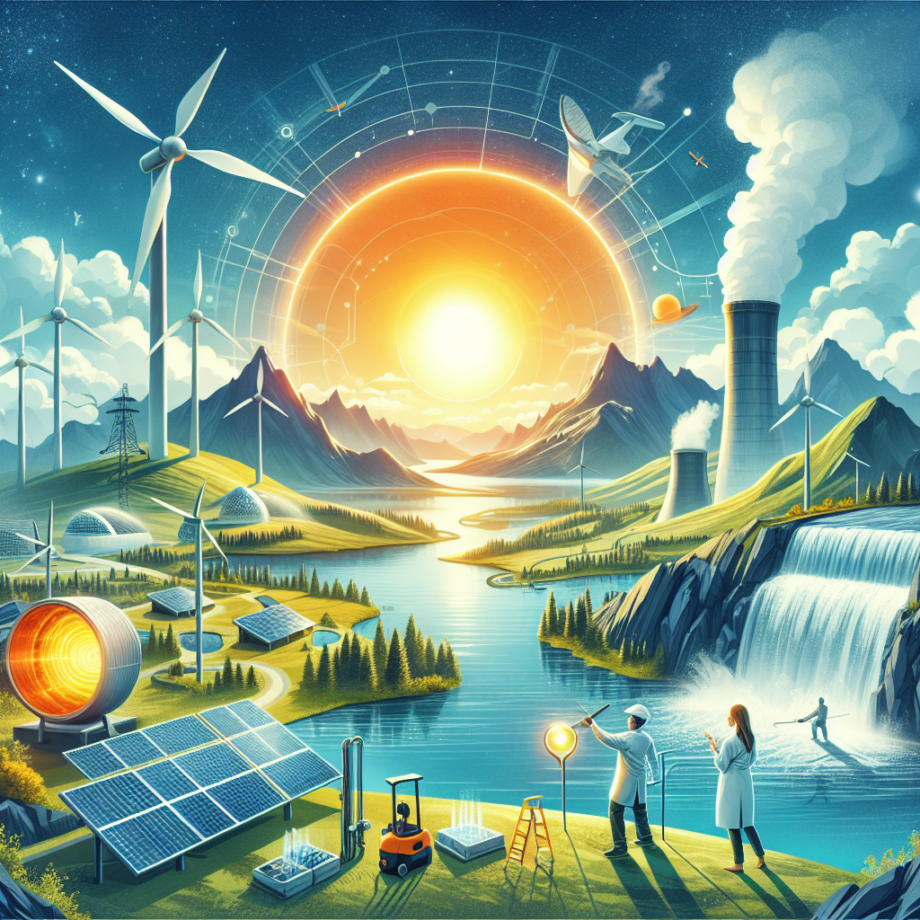
The Renewable Energy Revolution
As the world shifts towards more sustainable energy sources, the innovations in renewable energy production are evolving at an astonishing pace. This rapid technological advancement is reshaping the global energy landscape and paving the way for a cleaner, greener future. In this article, we will explore the most groundbreaking innovations in renewable energy production, highlighting how they are transforming the industry.
Solar Energy Innovations
Perovskite Solar Cells
One of the most promising developments in solar energy is the advent of perovskite solar cells. These cells offer several advantages over traditional silicon-based solar panels, including higher efficiency, lower production costs, and greater flexibility in application. Researchers are continuously working on enhancing the stability and efficiency of perovskite cells, making them a viable competitor to conventional solar technology.
Bifacial Solar Panels
Bifacial solar panels are another exciting innovation in the solar energy sector. Unlike traditional solar panels, which capture sunlight on only one side, bifacial panels can absorb sunlight from both sides. This dual-sided approach significantly increases their energy output, making them an attractive option for solar farms and rooftop installations alike.
Solar Skin Design
An innovative approach to integrating solar technology into our daily lives is the solar skin design. This technology allows solar panels to be customized to match the aesthetics of buildings, vehicles, and other structures. By seamlessly blending in with their surroundings, solar skin designs make it easier for solar technology to be adopted in urban environments without compromising on aesthetics.
Wind Energy Innovations
Floating Wind Turbines
Floating wind turbines represent a significant leap forward in wind energy production. Traditional wind turbines are anchored to the seabed, limiting their placement to shallow waters. Floating wind turbines, on the other hand, can be deployed in deeper waters where wind speeds are generally higher and more consistent. This opens up vast new areas for wind energy production, further enhancing the potential of offshore wind farms.
Vertical Axis Wind Turbines
Unlike traditional horizontal-axis wind turbines, vertical axis wind turbines (VAWTs) have a vertical orientation. VAWTs are particularly well-suited for urban environments and areas with turbulent wind conditions, as they are capable of capturing wind from any direction. Their compact and versatile design makes them a promising alternative for localized wind energy production.
Blade Redesign and Smart Blades
Modern wind turbine blades are becoming increasingly sophisticated with advancements in materials and design. Innovations such as bendable and segmented blades help reduce stress on the turbine structure, enhancing their longevity and efficiency. Additionally, smart blades equipped with sensors and control systems can optimize their performance in real-time, further boosting the efficiency of wind energy production.
Emerging Renewable Technologies
Hydrogen Fuel Cells
Hydrogen fuel cells are garnering attention as an emerging renewable energy technology with the potential to revolutionize several industries. These cells convert hydrogen into electricity, producing only water and heat as byproducts. Hydrogen can be produced using renewable energy sources, such as solar and wind, making it a clean and sustainable energy carrier. With advancements in storage and transportation, hydrogen fuel cells are poised to play a crucial role in the future energy landscape.
Ocean Energy
Ocean energy encompasses various forms of renewable energy derived from the sea, including wave energy, tidal energy, and ocean thermal energy. Wave energy converters and tidal turbines harness the kinetic energy from ocean waves and tides to generate electricity. Although still in the early stages of commercialization, ocean energy technologies have immense potential due to the vast and consistent energy resources available in the world’s oceans.
Bioenergy Developments
Bioenergy is another area witnessing significant advancements. Innovations in biomass conversion technologies are making it possible to produce biofuels more efficiently and sustainably. For instance, the development of advanced biofuels, such as cellulosic ethanol and algae-based biofuels, offers a renewable alternative to fossil fuels for transportation. Additionally, biomass gasification and anaerobic digestion technologies are enhancing the production of biogas for power generation and heating.
The Future of Renewable Energy
The future of renewable energy production is incredibly promising, with continuous innovations driving the transition towards a more sustainable energy system. Governments, businesses, and research institutions worldwide are investing heavily in renewable energy technologies, recognizing their potential to mitigate climate change and reduce dependence on fossil fuels.
- Policy and Incentives: Governments are implementing policies and incentives to encourage the adoption of renewable energy. These include tax credits, subsidies, and renewable energy mandates.
- Energy Storage Solutions: Advancements in energy storage technologies, such as batteries and supercapacitors, are crucial for addressing the intermittent nature of renewable energy sources. Efficient storage systems enable the reliable integration of renewable energy into the grid.
- Smart Grids: The development of smart grid technologies enhances the efficiency and reliability of energy distribution. Smart grids can dynamically balance supply and demand, incorporating renewable energy sources seamlessly.
- Decentralized Energy Systems: The trend towards decentralized energy systems, where energy is produced closer to where it is consumed, is gaining momentum. This approach reduces transmission losses and enhances energy security.
In conclusion, the innovations in renewable energy production are driving a fundamental shift in how we generate and consume energy. From solar and wind to emerging technologies like hydrogen fuel cells and ocean energy, these advancements are crucial for building a sustainable and resilient energy future. By embracing these innovations, we can collectively work towards a cleaner and greener planet for generations to come.
